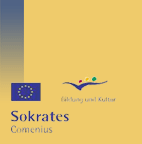The
task of teaching
4.
Assessment
and self-assessment
Assessment is intrinsic to school educational activity: when something
is taught, the aim is that some learning occurs, and so results have to be
collected and assessed, and they in turn affect teaching.
What should be assessed? Evidently, the progress of each student, both
in terms of attitude and ability to explain or act. In our context of technical
education and with the holistic educational model that we assume, it is clear
that the learning of conceptual contents is long-term; and the smaller the
child, the longer the term required. Attitude contents are also always medium-
or long-term, but in questions of procedural contents we can expect more marked
progress.
It is important to highlight that, in our teaching framework, the
assessment of the conceptual contents of an area requires asking for and gathering
explanations on facts and concrete situations (verbally, in writing, with a
drawing, etc.). To have full information on the student's level of knowledge,
the teacher has to know how to recognize it in the explanations gathered.
She/he should have regard to:
- the explanatory structures,
- the reasoning strategies,
- the specific vocabulary used.
To assess attitude and procedural contents, the guidelines used are
(too?) general. However, the possibly different attitudes of girls and boys
to technology require special monitoring.
It is also necessary to evaluate group dynamics, with special attention
to the roles assumed and the possible differences between boys and girls. It is
important to apply measures to produce a better gender balance and to improve
collaboration between students.
However, the validity and suitability of activities must also be
evaluated. The data collected during observation of students and work groups
are the raw material for evaluating activities, although one has to foresee
whether there is some special variable to be taken into account, such as, for
example, the material used, time, space or work conditions, etc.
Lastly, it is clear that if teachers are undertaking research, their
activities will require special evaluation.
We will now move on to self-assessment of both students and the teacher.
In recent years there has been a steady change in the meaning of student
assessment towards a more educational and less punitive conception. This change
is part of a more general educational tendency that wants students to become
more aware of their learning and gives students more responsibility and power
of decision in their own educational process.
Along these lines, educational practices such as the contract between
teacher and student, the student tutor, and self-diagnosis and self-assessment
have been introduced.
Self-assessment requires the teacher to talk with the youngest students
about what they have learned, whether they have worked a lot or little, or
whether they are happy with what they have done, etc. With older students, more
elaborate assessment can be tried: for example, asking them what they believe
they know and what they think they should learn about some topic or situation.
They can be asked what they think they have learned after doing an activity; or
they can be asked to relate it to their initial diagnosis, etc.
That part of the self-assessment of teachers' tasks which corresponds to
the function of curricular design has already been dealt with in the evaluation
of activities. The best way to monitor the direction of activities is to
video-record a class. This self-assessment requires time and should be done in
a group, but it is important to do it sometime, because often teachers are not
aware of the characteristics of their performance in class.
Cerveró,
J.M.; Cabellos M.; Castells, M.











